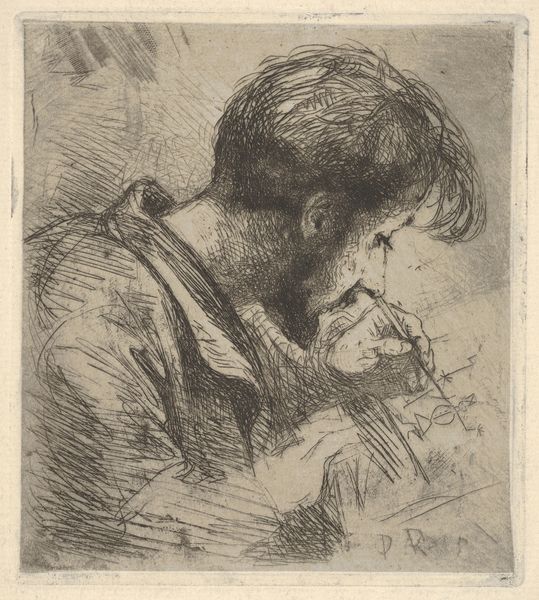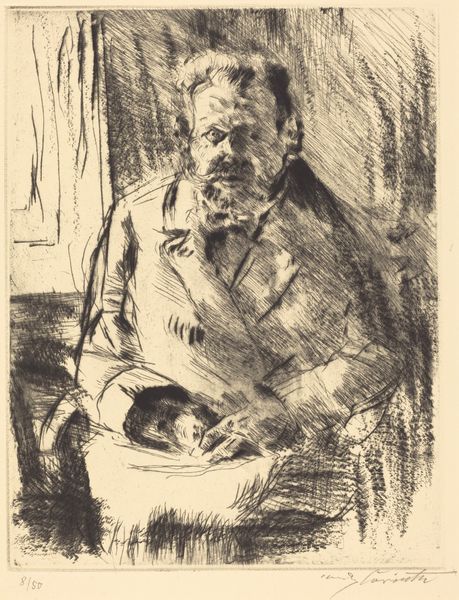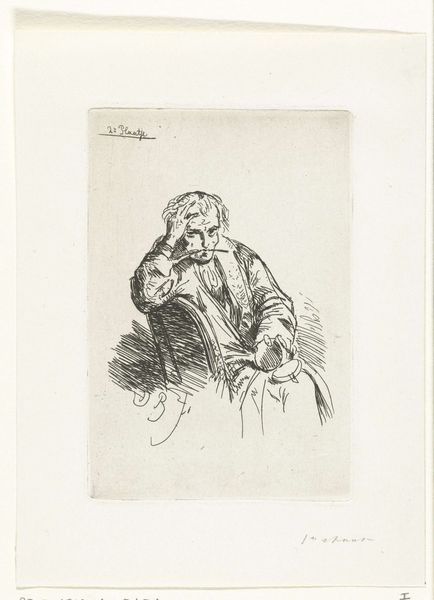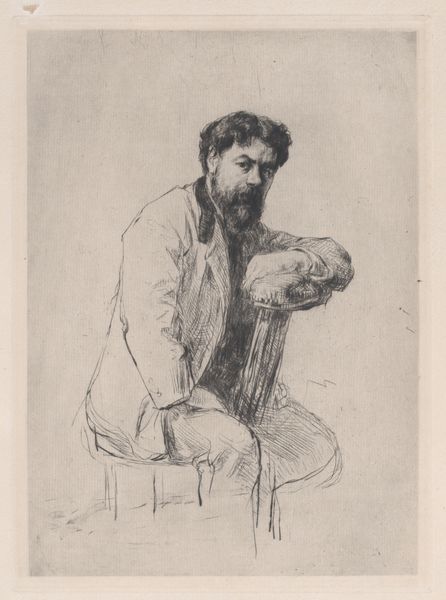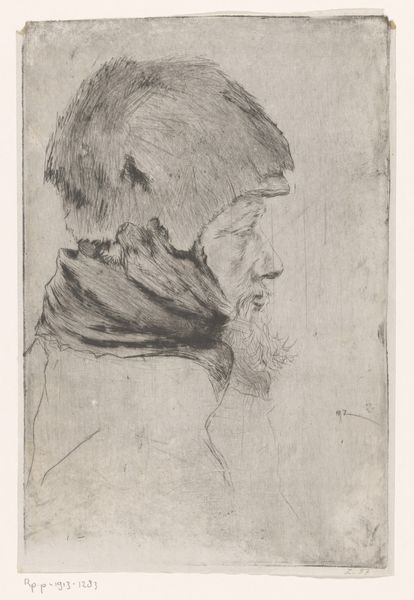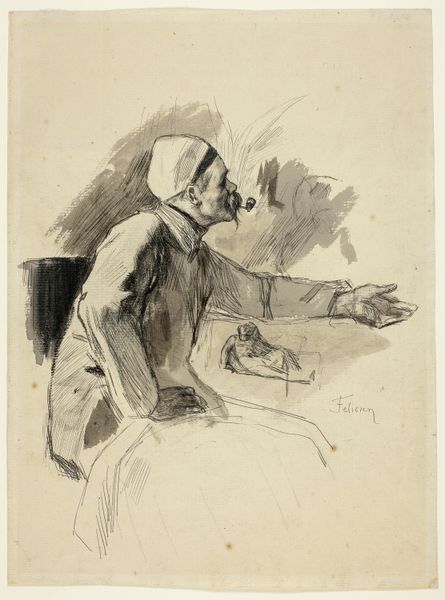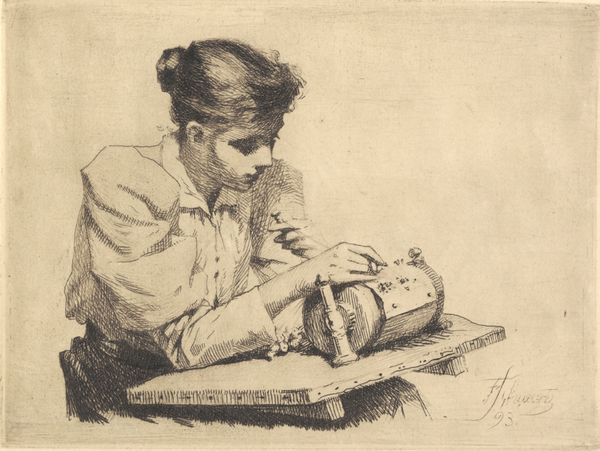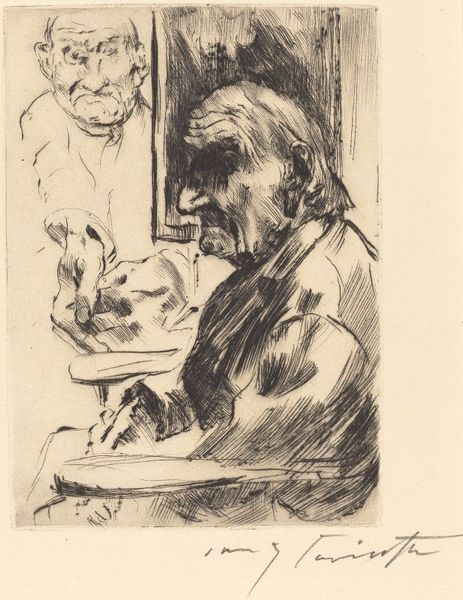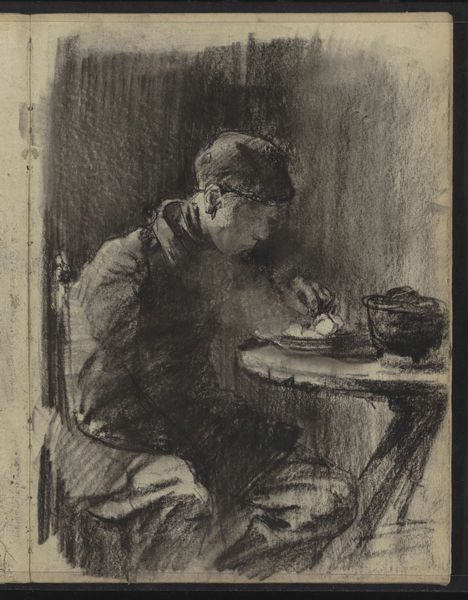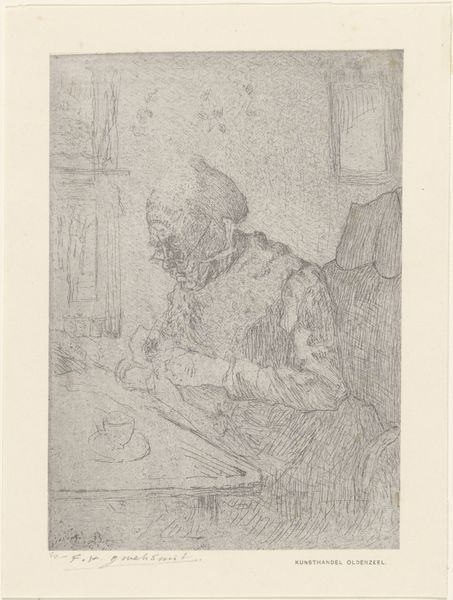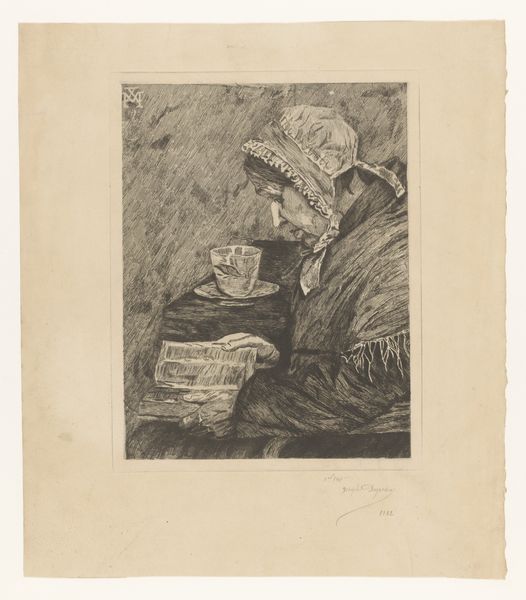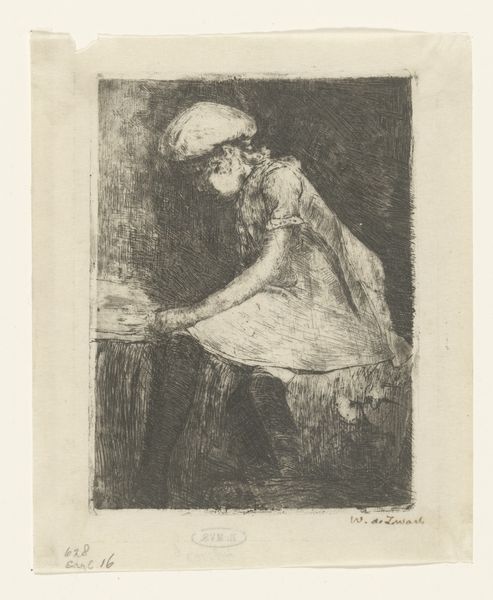
drawing, ink, pen
#
portrait
#
drawing
#
ink drawing
#
pen illustration
#
pen sketch
#
pencil sketch
#
cartoon sketch
#
personal sketchbook
#
ink
#
ink drawing experimentation
#
pen-ink sketch
#
sketchbook drawing
#
pen
#
portrait drawing
#
genre-painting
#
realism
Dimensions: height 305 mm, width 253 mm
Copyright: Rijks Museum: Open Domain
Curator: Here we have a pen and ink drawing titled “Biddende man met gevouwen handen,” or "Praying Man with Folded Hands," created between 1871 and 1889 by Pieter de Josselin de Jong, and part of the Rijksmuseum collection. Editor: The first thing that strikes me is the intensity of feeling emanating from the figure. The stark contrast and deeply shadowed face convey a profound sense of introspection, even despair. It is a powerful portrait despite its simplicity. Curator: Absolutely. And it’s important to consider this work within the social context of the late 19th century. Representations of the working class were gaining prominence, and images like this can be seen as offering a window into the emotional and spiritual lives of ordinary people. Think about the rise of Realism and the way it sought to depict everyday realities. Editor: Yes, I agree. The artist uses realism not to simply document the physical appearance of the man but to suggest his internal state. The hands, clasped so tightly, speak to the social pressure, or personal struggle he may be dealing with. We can analyze the drawing’s connection to contemporaneous debates about poverty, faith, and social reform. Was it possibly exhibited publicly during times of increased visibility and consideration of public morality? Curator: Indeed. His technique really captures a particular moment in history and makes the implicit explicit; he masterfully guides our empathetic reaction through dramatic light and the almost overwhelming feeling of concentrated, burdened emotion. The drawing invites us to reflect on societal roles and on the complex relationship between inner feeling and social status. Editor: It's almost cinematic in its intensity, a still from a larger narrative. The artist could also be attempting to represent an individualized internal conflict within a specific societal class—and perhaps commenting on what specific societal expectations created the depicted emotive response. I think the very act of representing this subject matter reflects certain socio-political and cultural tensions. Curator: Yes, it reminds us that artworks, particularly portraits, function as both reflections and shapers of cultural values and power dynamics. It leaves us with a feeling of having participated in a profound historical, socio-cultural event. Editor: Right, it has also left me pondering not just art but human frailty and what it communicates across centuries and social landscapes.
Comments
No comments
Be the first to comment and join the conversation on the ultimate creative platform.
